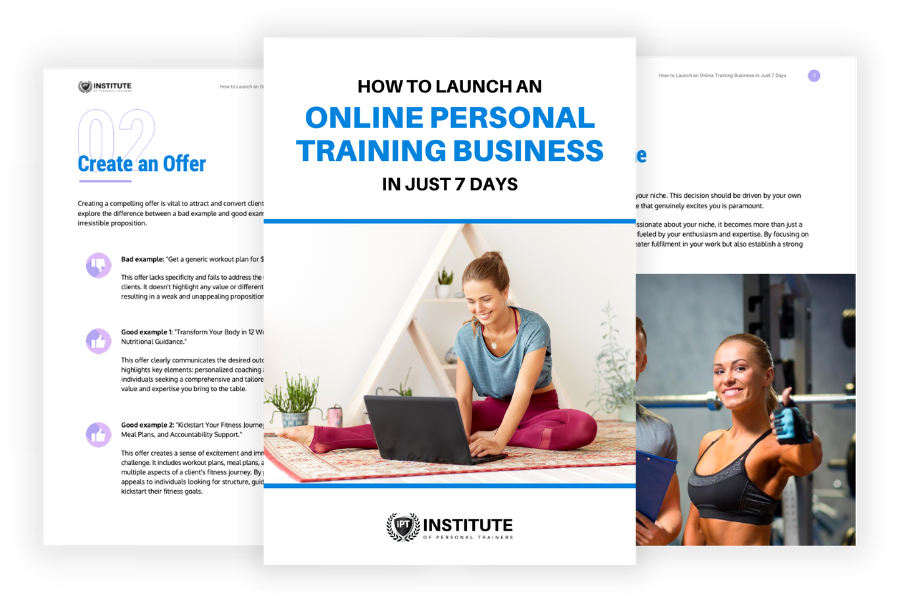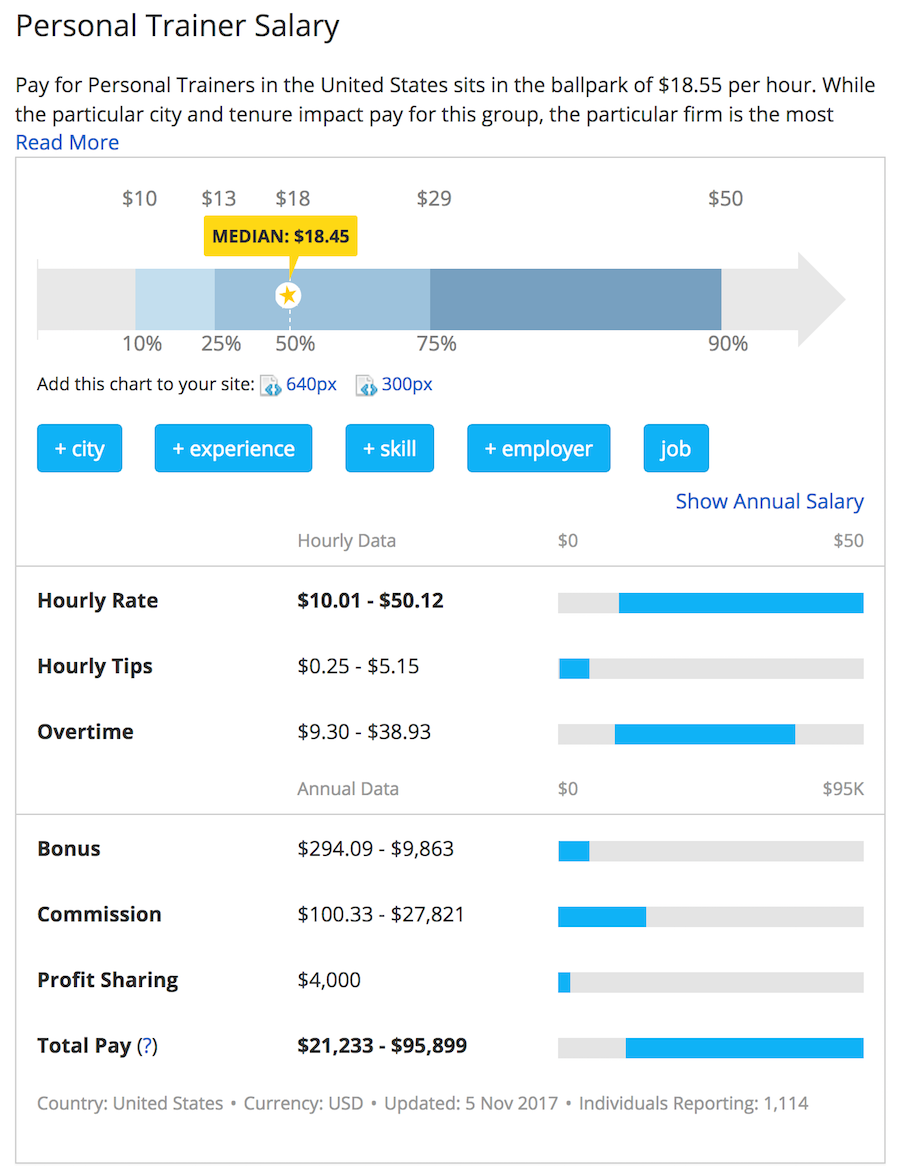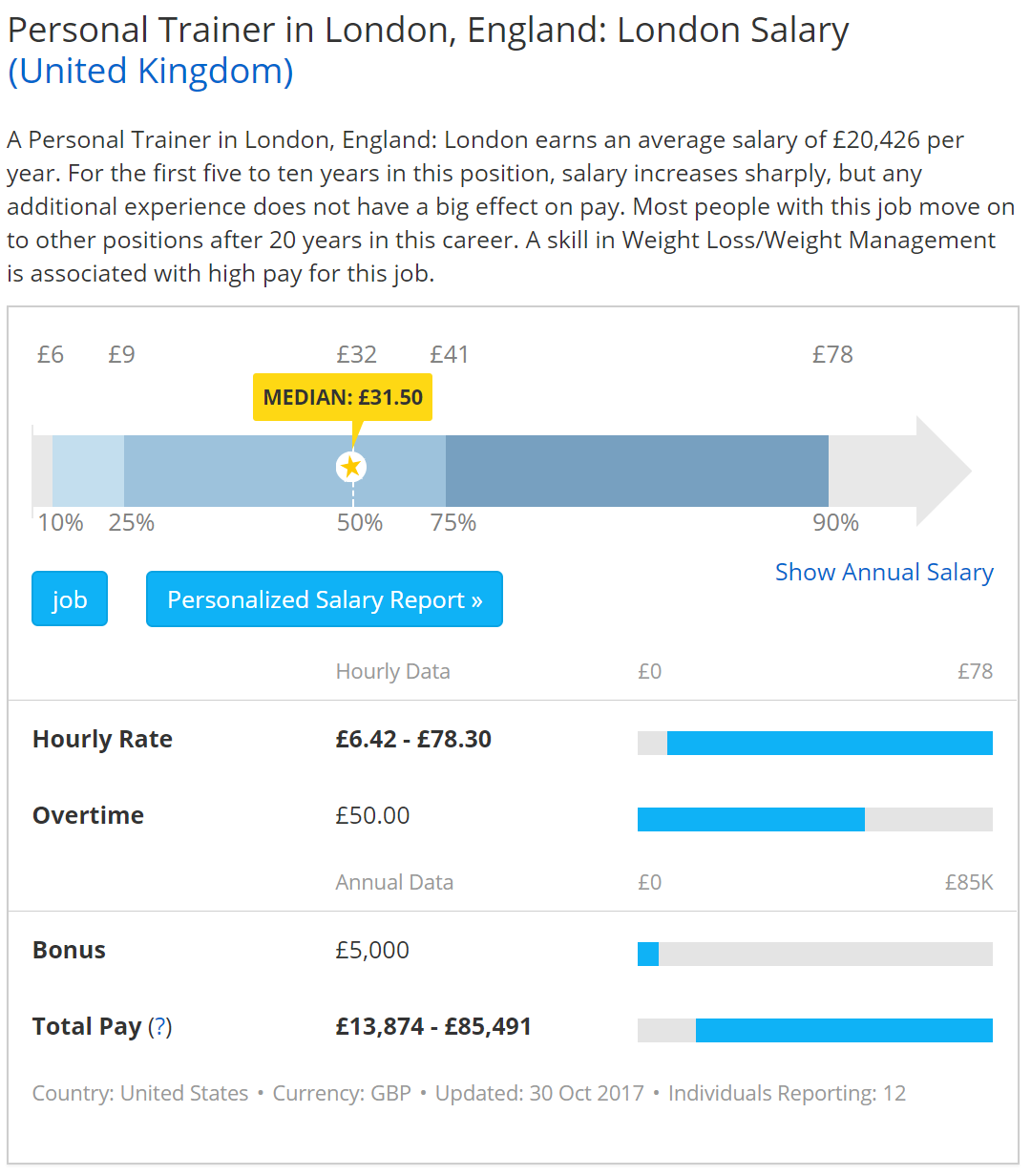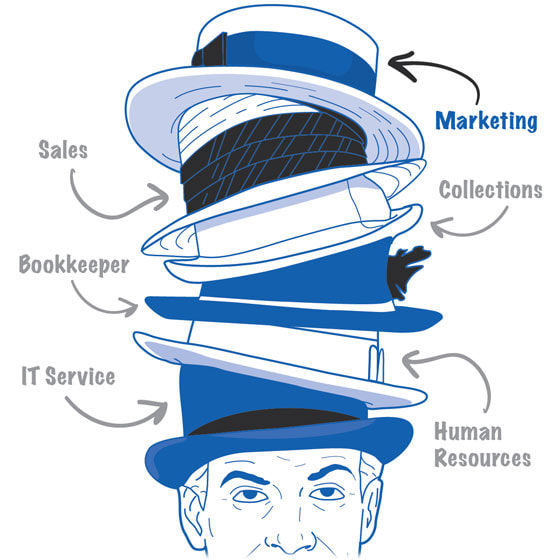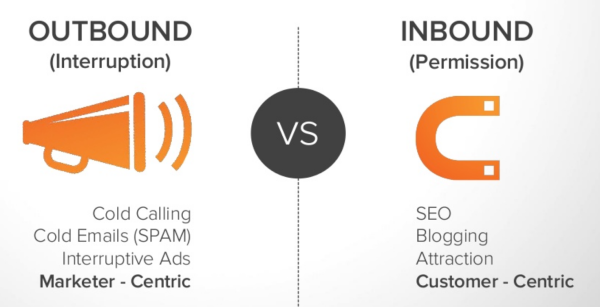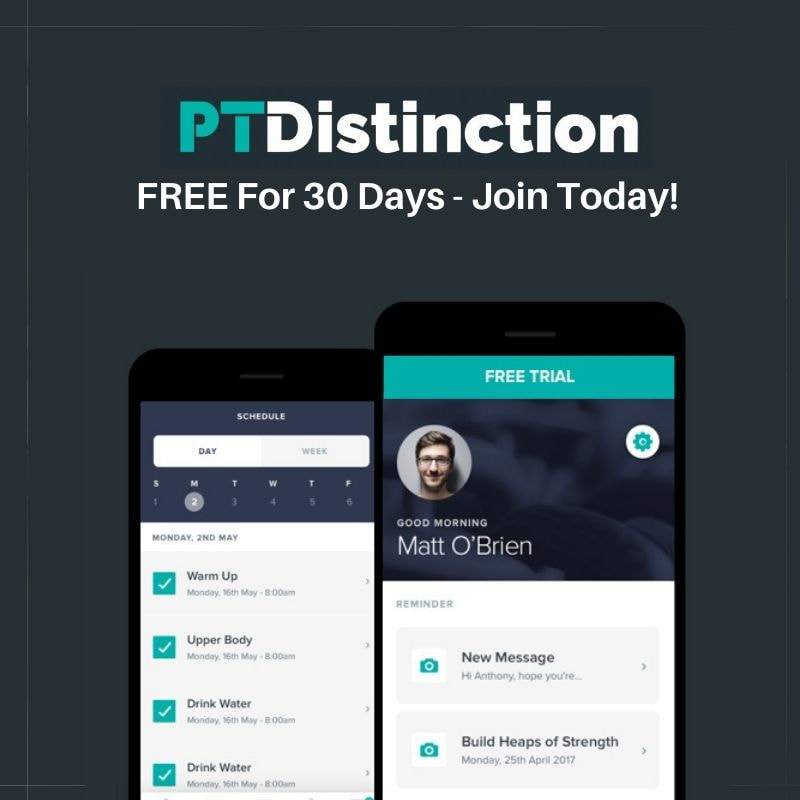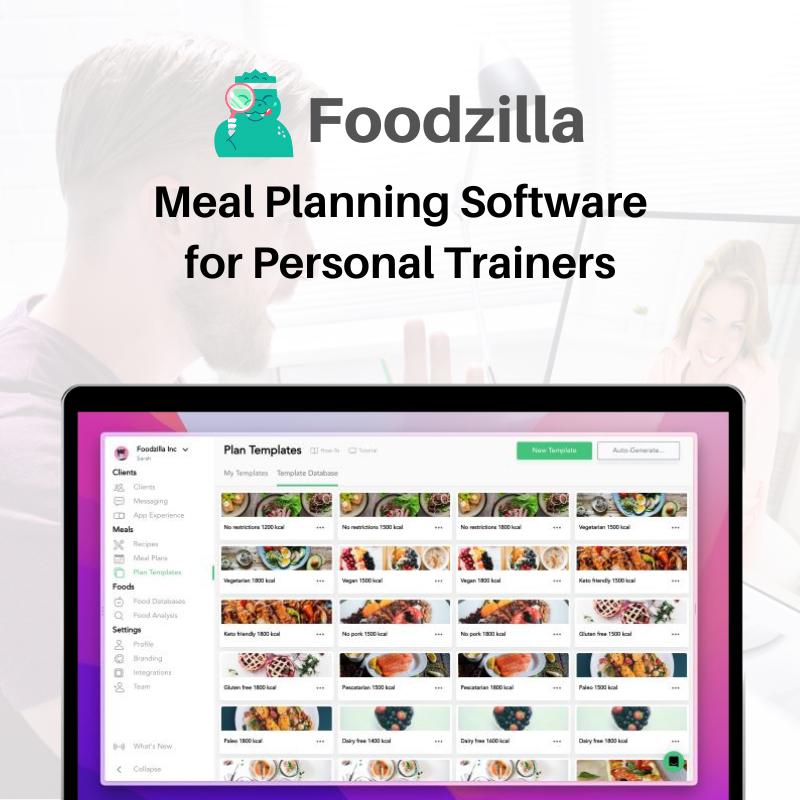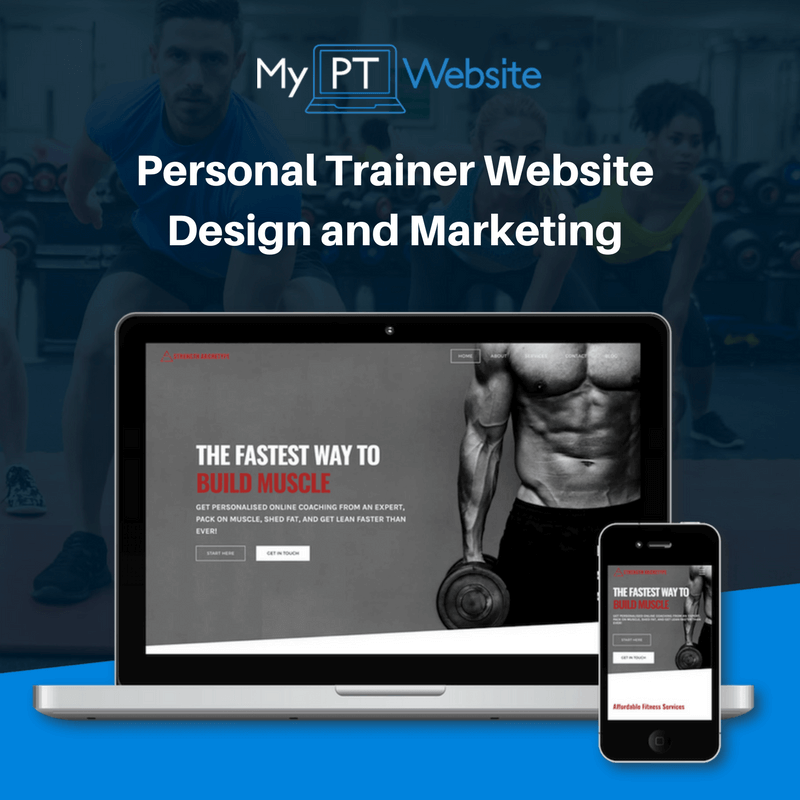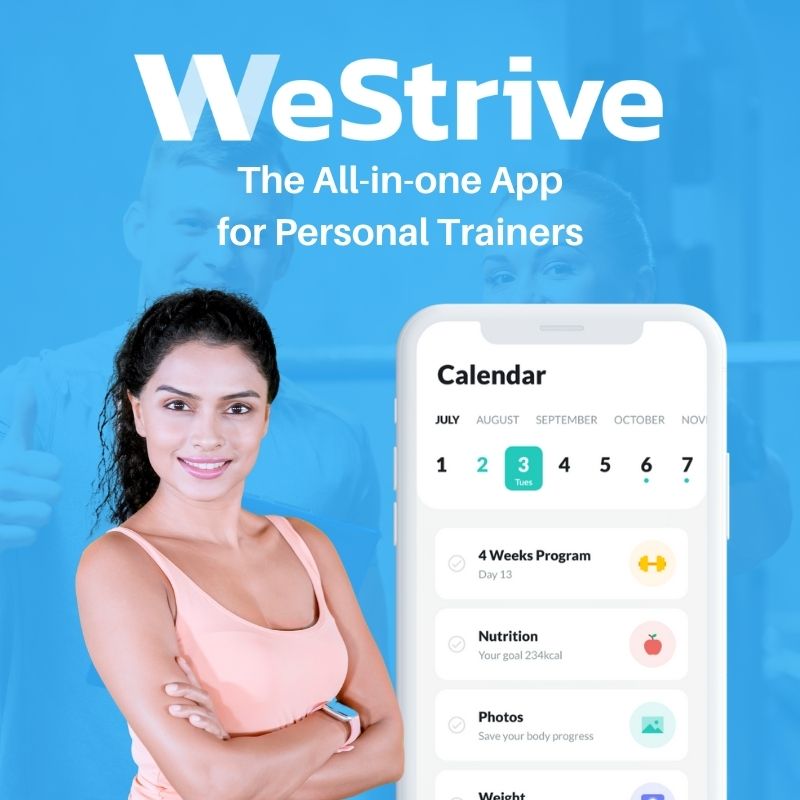|
FREE GUIDE: HOW TO LAUNCH AN ONLINE PERSONAL TRAINING BUSINESS
IN JUST 7 DAYS
✓ The new, better way of launching an online business
✓ The fastest way to create in irresistible offer ✓ A simple system to sell to clients who are interested |
|
We’ve been there. You just received your certificate and couldn’t be more excited to get out there and start changing lives. But then you realise it's not all sunshine, happiness and banknotes flying in your pocket. In fact, it's nothing like what you expected. According to a report by Work in Fitness, of 1810 UK based fitness professionals, when asked about their future, 67% said they planned to stay for up to 5 years and only 22% planned for more than 5 years. 45% of the interviewed fitpros admitted they might leave their profession due to low income. That's right, low income. But don't personal trainers get paid loads? You'd be surprised. According to Payscale.com the average hourly rate for personal trainers in the US is $18.45. In London, UK it's just £31.50 with those numbers declining in less populated cities. Whilst some of these numbers may sound depressing, there's a big difference between the trainers who are struggling and the personal trainers whose businesses are thriving. It's all about year one and here are 6 steps to survive your first year as a personal trainer. Step 1. Change Your MindsetUnless you are employed by a gym that assigns clients to you, you are in charge now. The most important thing to understand is that ‘personal training’ is the service you provide, it’s not who you are. The moment you received your PT certificate, you became a ‘business owner’. That's in bold because it's very important. You're a business owner now and it's time to start thinking like one. This means that sometimes you're going to have to make decisions as a business owner. Things like marketing, systems, software, websites and eventually, employees. They're hard decisions. Especially if you don't know how to run a business, what software to choose or how to create systems that serve you and your clients. But the more you learn about business, the easier these decisions become and the more natural being a business owner will feel to you. The sooner you understand what it means to be a business owner, the earlier you can shift your focus and start working on how to start, run and grow your business. How much you earn will depend on how much work you are willing to put in. However, it’s not just about hours, it’s more about what you spend those hours working on. Step 2. Create a PlanAfter you acknowledged your role and deciding to learn and develop to be successful in business, the next step is to create a plan. What is the first thing you do when you start working with a new client? You create a plan for them to follow to increase their chances of success. It’s no different in business. You will need to set short, medium and long-term goals. Creating a plan becomes easier if you have a framework you can use. Access the Personal Trainer Business Plan career guide to help you get started. It might seem like a bit of a chore to spend time on this and you might be thinking that it's a waste of time, but just the act of turning thought into words on paper is a powerful exercise. If, like me, you suck at planning ahead, don't spend too much time on it. Create a loose plan. Because all plans change. Especially in a new business. Recommended Resources Step 3. Do Your NumbersMoney is the language of business. If you know some basic accounting terminology, you're speaking business language. With this language you can calculate how much revenue you need to cover your expenses. For example:
Total outgoings: $800 per month.
That's 10 whole sessions with client per week just to break even on her expenses. I think Gill needs to charge more. Understanding how money works is essential for your business’ growth. Knowing your numbers can help you stay disciplined with how you manage money and see profit quicker. Recommended Resources Step 4. Become a Marketer Once you have a business plan that includes some basic business numbers you can start working on your marketing strategy. The available tools and resources are endless so understanding which platform works best for your target market is key. There are two main strategies you can use in marketing.
In an ideal world you'd do both. But not all trainers have the luxury of expendable income to spend on ads. This means that inbound marketing is often the best and cheapest solution for new PT's. Inbound marketing entails identifying your buyer persona, choosing your niche, creating your USP and understanding where you can find your ideal clients. Step 5. Build a Structure When you start out you need all the business you can put your hands on, so you will more likely be flexible with clients. However, building a structure to your services will give you and your clients a framework. Some common business structures and their pros and cons are:
Each of these structure then include variables such as gym based, outdoor or in the home and can also be taken online. The reason you need to think about structure early is so that you can plan for growth. Because each structure requires a different strategy to scale. Recommended Resources Step 6. Plan for GrowthImagine you are fully booked, earn decent money and able to save for business development. You realize that you are at the maximum of your capacity and you're worried that your business can’t grow further. You may realize that you want some more free time to spend with your loved ones, go traveling or do more of what you like. Planning for growth is key to earning the money you need to live a life of freedom and getting the things you want for you and your family. One day you'll be thinking about hiring a trainer to take over some or all your sessions or to venture into the online space. These require systems. Once all the repetitive processes are automated and the system is live you will be able to serve hundreds of people who don’t even need to be locals. Recommended Resources |
Our All In One Platform
Check out out all in one business & marketing platform for personal trainers!
WEBSITE BUILDER | FUNNELS |MEMBERSHIPS | SCHEDULING| EMAIL MARKETING| PAYMENTS| CRM | AI ASSISTANT | SURVEYS
Popular Articles
Trusted Partners
We work closely with some of the best service providers in the fitness industry.
Categories
All
|

